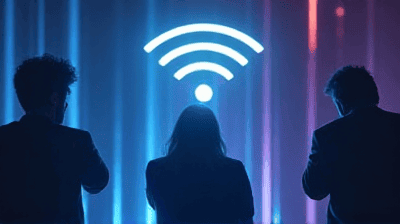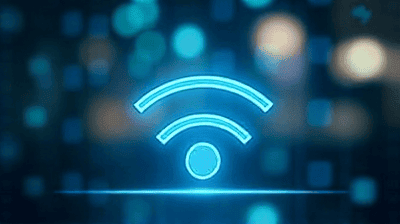Li-Fi Explained: Can Visible Light Communication Replace Wi-Fi?

In our increasingly connected world, wireless communication technology plays an essential role in how we interact, share information, and access services. Wi-Fi has become the backbone of wireless connectivity, enabling seamless internet access for various devices. However, as the demand for faster and more reliable internet continues to grow, researchers and technologists are exploring alternative solutions, among which Li-Fi has emerged as a promising contender. Li-Fi, or Light Fidelity, leverages visible light communication to transmit data, raising an intriguing question: can it replace Wi-Fi?
Understanding Li-Fi
What is Li-Fi?
Li-Fi is a wireless communication technology that uses visible light, ultraviolet light, and infrared light to transmit data. It operates on the principle of visible light communication (VLC), where light-emitting diodes (LEDs) modulate light intensity to encode information. This technology can transmit data at high speeds by rapidly turning the light on and off, which is imperceptible to the human eye.
How Li-Fi Works
Li-Fi operates by utilizing the modulation of light signals in a few simple steps:
Light Source: A standard LED light bulb or an advanced Li-Fi-enabled LED serves as the transmitter. The light output of these LEDs can be varied by changing its intensity.
Modulation: The data to be transmitted is converted into a binary format (ones and zeros). The LED pulses on and off at incredibly high speeds to represent this data as varying light intensity. This modulation can occur thousands of times per second.
Receiver: A photodetector, typically a photodiode, is used to receive the modulated light signals. The photodiode converts the variations in light intensity back into electrical signals.
Data Processing: The received electrical signals are then processed, decoded, and transformed into usable data for devices such as smartphones, computers, or other connected devices.
Key Features of Li-Fi Technology
High Data Transmission Speeds: Li-Fi can achieve significantly higher data rates than traditional Wi-Fi, reaching speeds of over 1 Gbps under optimal conditions.
Utilization of the Electromagnetic Spectrum: Li-Fi leverages the visible light spectrum, which is vastly underutilized compared to radio frequencies used by Wi-Fi. This enables the technology to alleviate congestion in the radio frequency spectrum.
Enhanced Security: Since light cannot penetrate walls, Li-Fi signals are confined to the physical space of a room, making it inherently more secure than Wi-Fi, which can be intercepted from outside the transmission range.
Energy Efficiency: The technology can utilize existing LED lighting infrastructure, which aligns with energy-efficient lighting solutions, reducing the overall energy consumption associated with data transmission.
Advantages of Li-Fi

1. Speed and Bandwidth
One of the most notable advantages of Li-Fi is its potential for high data transmission speeds. Li-Fi can achieve speeds much greater than conventional Wi-Fi due to the capability of LEDs to modulate light intensity at rapid rates. Data rates exceeding 10 Gbps have been demonstrated in laboratory settings, potentially enabling applications such as remote surgery and high-definition video streaming.
2. Reduced Interference
Li-Fi can operate in environments where radio frequency communication may be challenging, such as in hospitals, aircraft, or industrial settings. Since Li-Fi uses light instead of radio waves, it is not susceptible to electromagnetic interference (EMI), making it suitable for sensitive environments.
3. Increased Capacity
The visible light spectrum offers a much larger bandwidth than the radio frequency spectrum, allowing Li-Fi to transmit a significantly higher amount of data concurrently. This increased capacity addresses the growing demand for data-driven applications and services.
4. Enhanced Security
The security features of Li-Fi provide a substantial advantage over traditional wireless technologies. As mentioned earlier, light cannot penetrate walls, which limits the range of Li-Fi signals to the immediate environment. This makes it more difficult for unauthorized users to intercept the data being transmitted, enhancing privacy and security.
5. Integration with Existing Infrastructure
Li-Fi technology can be integrated into existing LED lighting systems without substantial modifications. This compatibility allows organizations to leverage their current lighting infrastructure to provide wireless communication services, making it a cost-effective solution for many venues.
Challenges of Li-Fi
While Li-Fi holds considerable promise, it also faces several challenges that must be addressed before widespread adoption can occur.
1. Line of Sight
A primary limitation of Li-Fi is its requirement for a direct line of sight between the transmitter and receiver. Physical obstructions, such as furniture or walls, can disrupt the light path and interfere with communication. This limitation can restrict mobility and flexibility compared to Wi-Fi, which can penetrate barriers.
2. Dependence on Ambient Light Conditions
Li-Fi performance can be affected by ambient light conditions. Excessive sunlight or artificial lighting may interfere with the ability of the photodiode to accurately detect the modulated light signals, leading to potential signal degradation.
3. Limited Range
Li-Fi technology operates effectively within a confined physical space, usually limited to a single room or area. The requirement for proximity to the light source restricts its range compared to Wi-Fi, which can cover broader areas through the use of routers and repeaters.
4. Standardization and Compatibility
As a relatively new technology, Li-Fi lacks standardized protocols and interfaces. This absence of standardization can hinder the development of compatible devices and infrastructure, affecting the adoption of the technology in consumer markets.
5. Complexity of System Design
Implementing a Li-Fi system may involve complex design and integration processes. Developers need to account for factors such as modulation schemes, channel allocation, and interference management, which can complicate deployment in real-world scenarios.
Applications of Li-Fi Technology

Li-Fi has a diverse range of potential applications across various sectors, leveraging its advantages in speed, security, and efficiency.
1. Smart Homes and IoT
In smart home environments, Li-Fi can facilitate seamless communication between connected devices. By integrating Li-Fi technology into LED lighting, homeowners can create a robust network that connects smart appliances, sensors, and security systems.
2. Healthcare
In healthcare settings, Li-Fi can be used to connect medical devices and equipment while minimizing interference with sensitive instruments. Its high data transfer speeds can support applications such as telemetry and remote patient monitoring.
3. Education
Li-Fi technology can revolutionize educational environments by providing high-speed internet access in classrooms and lecture halls. This capability allows for better access to online resources, multimedia content, and collaboration tools.
4. Transportation
Li-Fi can enhance communication in various transportation settings, including aircraft, trains, and buses. In-flight entertainment systems, real-time information updates, and connectivity can be facilitated without interference from radio signals.
5. Retail
Retail environments can leverage Li-Fi for location-based services, enhancing customer experiences and providing targeted advertisements and promotions. Using Li-Fi-enabled lighting, retailers can provide customers with customized content and offers based on their location within the store.
6. Public Spaces and Venues
Li-Fi can be used in public spaces, such as museums, airports, and conference centers, to provide visitors with high-speed internet access. This capability can enhance the visitor experience by enabling seamless access to information and services.
Comparing Li-Fi and Wi-Fi
To understand the potential of Li-Fi as a viable alternative to Wi-Fi, it is essential to compare the two technologies across several criteria.
1. Speed
Li-Fi offers significantly faster data transmission rates than traditional Wi-Fi, especially in controlled environments. While Wi-Fi networks may max out at several hundred megabits per second, Li-Fi has achieved speeds in excess of 10 Gbps under optimal conditions.
2. Coverage Area
Wi-Fi provides extensive coverage, often allowing users to connect to the internet from multiple rooms or even outdoor areas. In contrast, Li-Fi’s reach is confined to the physical space illuminated by the light source, limiting its applicability.
3. Security
Li-Fi inherently provides a higher level of security due to its inability to penetrate walls. This characteristic makes it more challenging for unauthorized users to intercept communications. Wi-Fi, while secure with proper encryption, can be more vulnerable to unauthorized access from external sources.
4. Interference
Li-Fi systems operate free of electromagnetic interference, making them suitable for sensitive environments like hospitals and laboratories. Wi-Fi, conversely, can be affected by interference from other electronic devices operating in the radio frequency spectrum.
5. Infrastructure
Li-Fi can be integrated into existing LED lighting infrastructure, allowing for easy deployment in environments already utilizing energy-efficient lighting. Wi-Fi requires the installation of routers and access points to establish coverage in a space.
6. Complexity of Setup
Setting up a Wi-Fi network is relatively straightforward and requires less specialized knowledge than establishing a Li-Fi system. Li-Fi systems necessitate more intricate design considerations, especially regarding modulation and system integration.
The Future of Li-Fi in Wireless Communication

As technology continues to evolve, the future of Li-Fi and its role in wireless communication remains a topic of significant interest and speculation.
1. Advancements in Technology
Continued research and development in Li-Fi technology promise to overcome some of its current limitations. Innovations in modulation techniques, photodetector technology, and light source capabilities may enhance performance, increase range, and improve compatibility.
2. Standardization Efforts
The establishment of industry standards for Li-Fi will be crucial for its widespread adoption. Collaborative efforts among manufacturers, researchers, and organizations will help create protocols ensuring compatibility and interoperability among devices.
3. Integration with 5G and Beyond
As 5G technology rolls out and evolves, there may be opportunities for synergy between Li-Fi and 5G networks. In urban environments, Li-Fi could complement 5G, providing high-speed connectivity in localized areas, such as streetlights and public buildings.
4. Expanding Use Cases
The potential applications of Li-Fi will diversify as businesses and developers explore novel ways to leverage its fast data transfer capabilities. From smart cities to enhanced digital experiences, the versatility of Li-Fi will likely lead to emerging use cases.
5. Public Awareness and Acceptance
For Li-Fi to become a viable alternative to Wi-Fi, public awareness and acceptance must grow. As consumers and businesses learn about the benefits and advantages of Li-Fi, it may start to gain traction in the market.
Conclusion
Li-Fi represents a groundbreaking advancement in wireless communication technology, offering significant advantages over traditional Wi-Fi in terms of speed, security, and efficiency. While challenges such as line of sight and limited range remain, ongoing research and development are poised to address these issues, fostering a more robust framework for the future of connectivity.
Ultimately, the question of whether Li-Fi can replace Wi-Fi may depend on the context in which it is applied. In specific environments and use cases, especially where high speed and security are paramount, Li-Fi may prove to be an excellent complementary technology. As both technologies continue to evolve, the future of wireless communication will likely involve a harmonious coexistence that leverages the strengths of Li-Fi and Wi-Fi to meet the growing demands for connectivity.
